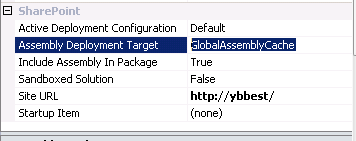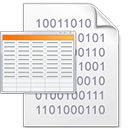https://social.technet.microsoft.com/Forums/scriptcenter/en-US/01085081-bbea-4cc1-b957-cb99c7f4fe4a/powershell-saving-a-file-with-the-date-in-the-filename?forum=ITCG
$enddate = (Get-Date).tostring("yyyyMMdd")
$filename = 'C:\Documents and Settings\User\Desktop\' + $enddate + '_VMReport.doc'
$filename
keep track and sharing on my sharepoint knowledge :) nice to meet you all
which country user step here?
Tag Cloud
MOSS
(47)
SharePoint 2007
(37)
SharePoint 2013
(31)
SharePoint 2010
(23)
MOSS admin
(17)
PowerShell
(17)
admin
(17)
developer
(16)
List
(15)
WSS
(14)
sql query
(14)
MOSS SP2
(13)
end user
(11)
scripting
(11)
wss V3
(11)
permission
(10)
sql
(9)
Moss issue
(8)
search
(8)
database
(7)
RBS
(6)
Service Pack
(6)
reportadmin
(6)
workflow
(6)
CU
(5)
Excel
(5)
Patch
(5)
client object model
(5)
Client Code
(4)
Command
(4)
Cumulative Updates
(4)
IIS
(4)
SharePoint 2019
(4)
SharePoint designer
(4)
office 365
(4)
stsadm
(4)
user porfile
(4)
ASP.NET
(3)
Content Database
(3)
Groove
(3)
Host Named Site Collections (HNSC)
(3)
SharePoint 2016
(3)
Tutorial
(3)
alert
(3)
authentication
(3)
batch file
(3)
codeplex
(3)
domain
(3)
error
(3)
incomming email
(3)
issue
(3)
restore
(3)
upload
(3)
Caching
(2)
DocAve 6
(2)
Folder
(2)
Index
(2)
Internet
(2)
My Site Cleanup Job
(2)
My Sites
(2)
News
(2)
People Picker
(2)
Share Document
(2)
SharePoint admin
(2)
View
(2)
Web Development with ASP.NET
(2)
add user
(2)
audit
(2)
coding
(2)
column
(2)
deploy solution
(2)
download
(2)
enumsites
(2)
exam
(2)
export
(2)
june CU
(2)
load balance
(2)
mySites
(2)
network
(2)
orphan site
(2)
performance
(2)
profile
(2)
project server
(2)
query
(2)
security
(2)
server admin
(2)
theme
(2)
timer job
(2)
training
(2)
web master
(2)
web.config
(2)
wsp
(2)
70-346
(1)
70-630
(1)
AAM
(1)
Anonymous
(1)
Approval
(1)
AvePoint
(1)
Cerificate
(1)
Consultants
(1)
Content Deployment
(1)
Content Type
(1)
DOS
(1)
Document Library
(1)
Drive Sapce
(1)
Excel Services
(1)
Export to Excel
(1)
Feature
(1)
GAC
(1)
Get-SPContentDatabase
(1)
Get-WmiObject
(1)
HTML calculated column
(1)
ISA2006
(1)
IT Knowledge
(1)
ITIL
(1)
Install
(1)
Link
(1)
MCTS
(1)
Macro
(1)
Masking
(1)
Migration
(1)
NLBS
(1)
Nintex
(1)
Office
(1)
Open with Explorer
(1)
ROIScan.vbs
(1)
Reporting Services
(1)
SPDisposeCheck.exe
(1)
SQL Instance name
(1)
SSRS
(1)
Sandbox
(1)
SharePoint Online
(1)
SharePoint farm
(1)
Shared Services Administration
(1)
Site Collection Owner
(1)
Site template
(1)
Skype for business
(1)
Steelhead
(1)
Teams
(1)
URLSCAN
(1)
VLOOKUP
(1)
WSS SP2
(1)
XCOPY
(1)
abnormal incident
(1)
admi
(1)
app
(1)
application pool
(1)
aspx
(1)
availabilty
(1)
backup
(1)
binding
(1)
blob
(1)
branding sharepoint
(1)
cache
(1)
calendar
(1)
change password
(1)
connection
(1)
copy file
(1)
counter
(1)
crawl
(1)
custom list
(1)
domain security group
(1)
event
(1)
excel 2013
(1)
facebook
(1)
filter
(1)
fun
(1)
group
(1)
iis log
(1)
import
(1)
import list
(1)
improment
(1)
interview
(1)
keberos
(1)
licensing
(1)
log in
(1)
metada
(1)
migrate
(1)
mossrap
(1)
notepad++
(1)
onedrive for business
(1)
operation
(1)
owa
(1)
process
(1)
publishing feature
(1)
resource
(1)
send email
(1)
size
(1)
sps2003
(1)
sql201
(1)
sql2012
(1)
sub sites
(1)
system
(1)
table
(1)
task list
(1)
today date
(1)
trial
(1)
vbs
(1)
video
(1)
web part
(1)
web server
(1)
widget
(1)
windows 2008
(1)
windows 2012 R2
(1)
windows Azura
(1)
windows account
(1)
windows2012
(1)
wmi
(1)
Tuesday, April 26, 2016
Wednesday, April 20, 2016
Error: This solution contains no resources scoped for a Web application and cannot be deployed to a particular Web application
copy from : this blog
Problem:
When I try to deploy my custom wsp solution to a specific web application, I got the error below:
This solution contains no resources scoped for a Web application and cannot be deployed to a particular Web application.
Analysis:
The error message itself explains why you cannot deploy the solution to a web application. However if you do not like to deploy the solution to all the web applications and only like to deploy your solution to a specific application , you need to change the solution settings Assembly Deployment Target from GlobalAssemblyCache to WebApplication.
From:

TO:

Solution:
After you change the Assembly Deployment Target and run the script again, you will have the solution deployed successfully.
Wednesday, April 13, 2016
How to check your server able to connect to SQL server or not ?
Just fast sharing on How to check your server able to connect to SQL server or not ?
Just create one txt file then rename it with Test_SQL.udl (any name with .udl extension ) then you will see the icon :
Double click on it then you will see the windows box at below : fill in the server name and select you window NT account , click on test connection then u will see the database on the drop down box
Just create one txt file then rename it with Test_SQL.udl (any name with .udl extension ) then you will see the icon :
Double click on it then you will see the windows box at below : fill in the server name and select you window NT account , click on test connection then u will see the database on the drop down box
Tuesday, April 12, 2016
Host Named Site Collections with anonymous log in issues
Scenario :
We have a Claims Based Web Application which hosts various Host Named Site Collections.
One of these sites requires Anonymous Access. I have applied AA to the Web Application and activated it on the Site Collection in question. However, when users log in, when they navigate to another page they lose their login credentials (as if the cookies arent holding their data). Then they browse as Anonymous Users but suddenly they will appear logged in again?
Is this an error or a known issue? Can you use Anonymous Access on Claims Based Host Named Site Collections? Is their anything I can do to stop logged in users from suddenly being logged out and in?
Thanks >> copy from here
Root cause : suspected is because our HNSC web application root is not empty for port 80 , we have assign host header for it.
Workaround : using power shell command to assign https to AAM then the https access will not facing this issues.
example of the power shell command
Set-SPSiteUrl (Get-SPSite 'http://portal.contoso.com') -Url 'https://portal.contoso.com' -Zone Internet
We have a Claims Based Web Application which hosts various Host Named Site Collections.
One of these sites requires Anonymous Access. I have applied AA to the Web Application and activated it on the Site Collection in question. However, when users log in, when they navigate to another page they lose their login credentials (as if the cookies arent holding their data). Then they browse as Anonymous Users but suddenly they will appear logged in again?
Is this an error or a known issue? Can you use Anonymous Access on Claims Based Host Named Site Collections? Is their anything I can do to stop logged in users from suddenly being logged out and in?
Thanks >> copy from here
Root cause : suspected is because our HNSC web application root is not empty for port 80 , we have assign host header for it.
Workaround : using power shell command to assign https to AAM then the https access will not facing this issues.
example of the power shell command
Set-SPSiteUrl (Get-SPSite 'http://portal.contoso.com') -Url 'https://portal.contoso.com' -Zone Internet
Friday, April 1, 2016
SharePoint 2013 RBS setup for second content database
Normally you can get the information from internet for first time RBS setup step , example : https://blogs.technet.microsoft.com/bogdang/2014/12/04/install-and-configure-rbs-with-sharepoint-2013-and-sql-server-2012/
just sharing some command for setup on the following content DB after first RBS content DB is enable ,
http://go.microsoft.com/fwlink/?LinkID=188395&clcid=0x409 >> download for RBS.msi x64 package which is 5287KB file size is the correct version to support second content DB. if u downloaded the previous version then mind be not working.
SQL Query
==========
use wss_content
if not exists (select * from sys.symmetric_keys where name = N'##MS_DatabaseMasterKey##') create master key encryptionby password = N'Admin Key Password !2#4'
use wss_content
if not exists (select groupname from sysfilegroups where groupname=N'RBSFilestreamProvider')alter database wss_content add filegroup RBSFilestreamProvider
contains filestream
use wss_content
alter database wss_content add file (name = RBSFilestreamFile, filename = 'F:\Blobstore') to filegroup RBSFilestreamProvider
first content db enabel rbs , run at SQL server
===================================================
msiexec /qn /lvx* rbs_install_log.txt /i RBS.msi TRUSTSERVERCERTIFICATE=true FILEGROUP=PRIMARY DBNAME="WSS_Content_RBS" DBINSTANCE="DBPRD02" FILESTREAMFILEGROUP=RBSFilestreamProvider FILESTREAMSTORENAME=FilestreamProvider_1
first content db enabel rbs , run at application and web front end server
=====================================================
msiexec /qn /lvx* rbs_install_log.txt /i RBS.msi DBNAME="WSS_Content" DBINSTANCE="DBInstance Name" ADDLOCAL="Client,Docs,Maintainer,ServerScript,FilestreamClient,FilestreamServer"
second content db :need to enabe RBS ( run at sql or applicatin server)
=================================================================
msiexec /qn /lvx* rbs_install_log.txt /i RBS.msi REMOTEBLOBENABLE=1 FILESTREAMPROVIDERENABLE=1 FILESTREAMSTORENAME=FilestreamProvider_1 DBNAME="WSS_Content" ADDLOCAL="EnableRBS,FilestreamRunScript" DBINSTANCE="DBPRD02"
second content db : wfe install for rbs second content db
==========================================================
msiexec /qn /lvx* rbs_install_log.txt /i RBS.msi TRUSTSERVERCERTIFICATE=true FILEGROUP=PRIMARY DBNAME="WSS_Content" DBINSTANCE="DBPRD02" FILESTREAMFILEGROUP=RBSFilestreamProvider FILESTREAMSTORENAME=FilestreamProvider_1
powershell enable RBS
====================
$cdb = Get-SPContentDatabase WSS_Content
$rbss = $cdb.RemoteBlobStorageSettings
$rbss.Installed()
$rbss.Enable()
$rbss.SetActiveProviderName($rbss.GetProviderNames()[0])
$rbss
powershell migrate sql data to RBS
=================================
$cdb = Get-SPContentDatabase WSS_Content
$rbss = $cdb.RemoteBlobStorageSettings
$rbss.SetActiveProviderName($rbss.GetProviderNames()[0])
$rbss.Migrate()
Last Step :
========
Need to add application pool service account to the content DB for DB owner role.
*if not granted db role for application pool account, when you upload file will see error message . File name can't contain the following characters : &?<>#{}%~/\.
more information :
http://blogs.technet.com/b/pramodbalusu/archive/2011/07/09/rbs-and-sharepoint-2010.aspx
just sharing some command for setup on the following content DB after first RBS content DB is enable ,
http://go.microsoft.com/fwlink/?LinkID=188395&clcid=0x409 >> download for RBS.msi x64 package which is 5287KB file size is the correct version to support second content DB. if u downloaded the previous version then mind be not working.
SQL Query
==========
use wss_content
if not exists (select * from sys.symmetric_keys where name = N'##MS_DatabaseMasterKey##') create master key encryptionby password = N'Admin Key Password !2#4'
use wss_content
if not exists (select groupname from sysfilegroups where groupname=N'RBSFilestreamProvider')alter database wss_content add filegroup RBSFilestreamProvider
contains filestream
use wss_content
alter database wss_content add file (name = RBSFilestreamFile, filename = 'F:\Blobstore') to filegroup RBSFilestreamProvider
first content db enabel rbs , run at SQL server
===================================================
msiexec /qn /lvx* rbs_install_log.txt /i RBS.msi TRUSTSERVERCERTIFICATE=true FILEGROUP=PRIMARY DBNAME="WSS_Content_RBS" DBINSTANCE="DBPRD02" FILESTREAMFILEGROUP=RBSFilestreamProvider FILESTREAMSTORENAME=FilestreamProvider_1
first content db enabel rbs , run at application and web front end server
=====================================================
msiexec /qn /lvx* rbs_install_log.txt /i RBS.msi DBNAME="WSS_Content" DBINSTANCE="DBInstance Name" ADDLOCAL="Client,Docs,Maintainer,ServerScript,FilestreamClient,FilestreamServer"
second content db :need to enabe RBS ( run at sql or applicatin server)
=================================================================
msiexec /qn /lvx* rbs_install_log.txt /i RBS.msi REMOTEBLOBENABLE=1 FILESTREAMPROVIDERENABLE=1 FILESTREAMSTORENAME=FilestreamProvider_1 DBNAME="WSS_Content" ADDLOCAL="EnableRBS,FilestreamRunScript" DBINSTANCE="DBPRD02"
second content db : wfe install for rbs second content db
==========================================================
msiexec /qn /lvx* rbs_install_log.txt /i RBS.msi TRUSTSERVERCERTIFICATE=true FILEGROUP=PRIMARY DBNAME="WSS_Content" DBINSTANCE="DBPRD02" FILESTREAMFILEGROUP=RBSFilestreamProvider FILESTREAMSTORENAME=FilestreamProvider_1
powershell enable RBS
====================
$cdb = Get-SPContentDatabase WSS_Content
$rbss = $cdb.RemoteBlobStorageSettings
$rbss.Installed()
$rbss.Enable()
$rbss.SetActiveProviderName($rbss.GetProviderNames()[0])
$rbss
powershell migrate sql data to RBS
=================================
$cdb = Get-SPContentDatabase WSS_Content
$rbss = $cdb.RemoteBlobStorageSettings
$rbss.SetActiveProviderName($rbss.GetProviderNames()[0])
$rbss.Migrate()
Last Step :
========
Need to add application pool service account to the content DB for DB owner role.
*if not granted db role for application pool account, when you upload file will see error message . File name can't contain the following characters : &?<>#{}%~/\.
more information :
http://blogs.technet.com/b/pramodbalusu/archive/2011/07/09/rbs-and-sharepoint-2010.aspx
Subscribe to:
Posts (Atom)

